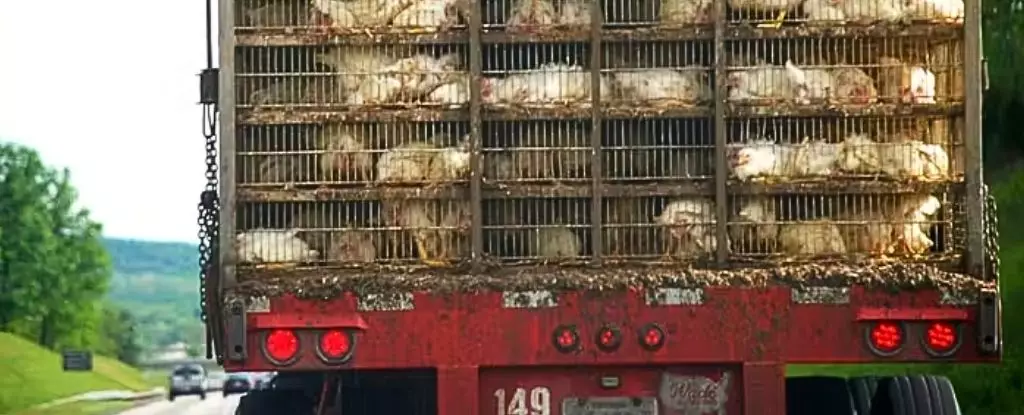The world stands on the brink of a possible avian influenza crisis, yet the conversation around this perilous disease often falls into a dull hum. Just as weather patterns can herald a storm, so too can we glean ominous signs from the landscape of infectious diseases. Among these, the H5N1 strain of avian influenza presents a unique and chilling threat to human health. Despite the relatively few human cases—approximately 900 since its emergence—its mortality rate is alarmingly high, averaging around 50%. This stark reality demands urgent attention, as the specter of a devastating pandemic looms ever closer.
H5N1’s trajectory within animal populations highlights a familiar pattern: stepwise evolution coupled with a grim potential for spillover into human hosts. Those with enough foresight may grasp that we are navigating an impending disaster, one that is the direct consequence of our ecological and agricultural practices. As the pattern of H5N1 continues to unfold, we must scrutinize our responsibility in this fragile ecological balance.
From Birds to Humans: A Painful Evolutionary Journey
The journey of H5N1 from birds to humans is akin to navigating a treacherous labyrinth. The virus encounters multiple evolutionary challenges, necessitating that it develops the right “keys” to unlock human cells. Yet, the chances of these mutations occurring are slim. It’s a grim reminder of how dangerously interconnected our existence is with the animal kingdom. The jump from avian hosts to humans is a precarious game; full of peril, the odds are stacked against the virus making this leap with devastating efficiency.
Recent outbreaks among various bird species and a smattering of human cases have created what epidemiologists dub “viral chatter.” Sparse cases that emerge sporadically are not simply benign occurrences; they raise alarms in public health communities. Each case is a whisper of what could easily escalate into a full-blown pandemic, where human-to-human transmission might become reality. The foresight demonstrated by health officials could be the buffer between pandemic chaos and containment, yet that requires an empathy for global health that is often sidelined by immediate economic interests.
The Equilibrium of Nature and Human Activity
Humans have long been disruptors in the intricate dance of nature. Our agricultural practices have shifted the balance, facilitating the spread of diseases like H5N1. The sheer volume of poultry farming, coupled with international livestock trading, facilitates the mutation and transfer of viruses. It is disheartening that in pursuing efficiency and profit, we often overlook the latent risks inherent in such practices. The reality is stark: we are enablers of this pathogen’s survival and evolution.
The approach to avert a future crisis must be twofold. On one hand, we must re-evaluate our agricultural and business practices. Ensuring proper sanitation and humane treatment of livestock could be a significant step towards preventing future spillover events. Yet, it’s equally crucial on the personal level—simple measures like vaccinating against seasonal flu are aspects that everyone can engage with. This seemingly benign action can ameliorate the consequences of potential mixing between H5N1 and more common human flu strains, creating barriers against their combination into a more virulent threat.
Collaborative Solutions for a Fragile Future
Our discourse on public health and disease control must shift from reactive to proactive. Global interconnectedness means the health of one can easily become the health of many. We must take initiatives to shore up our defenses against emerging infections by focusing on improving nutrition and sanitation in impoverished communities—the very breeding grounds for emerging pathogens. It’s about time that we recognize that investing in global health is not just altruism; it is self-preservation.
The pitfall of ignoring the anthropological aspect of disease evolution has historical roots. Historical analysis shows us that the trajectory of infectious diseases isn’t merely environmental but is deeply intertwined with human behaviors. As such, understanding these trajectories gives us the opportunity to redirect them toward resilience rather than vulnerability.
As we watch the unsettling dance of H5N1 unfold, let’s not be mere spectators. Addressing emerging threats like avian influenza requires collective action that prioritizes preventive measures and a holistic appreciation of our interconnected world. With every passing moment, we inch closer to a critical junction. Ignoring our role in shaping the path of infectious diseases could lead to catastrophic repercussions—one that the world may not be prepared to face.


Leave a Reply